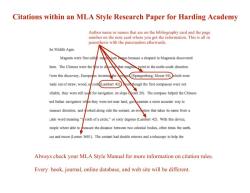How to write a more convincing case study?
Writing a convincing case study involves presenting a detailed and compelling narrative that highlights the problem, solution, and results of a specific situation. Whether you are writing a business case study, a scientific case study, or any other type, here are some tips and strategies to make it more convincing:
Understand Your Audience:
- Identify who will be reading the case study. Tailor your language, tone, and level of detail to match the knowledge and interests of your target audience.
Start with a Captivating Title:
- Create a title that immediately grabs attention and communicates the essence of the case study. A compelling title can encourage readers to explore further.
Provide Context and Background:
- Begin the case study by setting the stage. Clearly explain the context, background, and the specific problem or challenge faced by the subject of the case study.
Use a Storytelling Approach:
- Frame the case study as a story with a beginning, middle, and end. Introduce characters, describe the problem as a challenge to be overcome, and conclude with the resolution and results.
Clearly Define the Problem:
- Clearly articulate the problem or issue that the case study addresses. Use data, statistics, and real-world examples to illustrate the severity and impact of the problem.
Describe the Solution:
- Present the solution or approach taken to address the problem. Explain the thought process behind the solution and how it was implemented. Include relevant details about the methodology.
Include Supporting Data:
- Back up your claims with data and evidence. Use charts, graphs, statistics, and other visual aids to make the information more digestible and persuasive.
Highlight Successes and Results:
- Clearly outline the positive outcomes and results achieved through the implementation of the solution. Quantify the impact and use specific examples to illustrate success.
Include Quotes and Testimonials:
- Incorporate quotes from individuals involved in the case study. This can include testimonials from clients, employees, or experts. Quotes add a human touch and credibility to your narrative.
Address Challenges and Lessons Learned:
- Acknowledge any challenges or obstacles encountered during the process. Discuss how these challenges were overcome and the lessons learned. This demonstrates resilience and transparency.
Make it Visual:
- Use visuals to enhance your case study. Include relevant images, infographics, and charts to break up the text and make the content more engaging.
Keep it Concise and Focused:
- While providing comprehensive details, be mindful of length. Keep your case study focused and concise, avoiding unnecessary details that may dilute the impact of the narrative.
End with a Call to Action:
- Conclude the case study by summarizing the key points and, if applicable, include a call to action. This could be an invitation to learn more, try a product, or engage in further discussion.
Proofread and Edit:
- Ensure your case study is free of grammatical errors and typos. A well-edited and polished document reflects professionalism and attention to detail.
Seek Feedback:
- Before finalizing the case study, seek feedback from colleagues, mentors, or other stakeholders. Fresh perspectives can help identify areas for improvement and ensure clarity.
By following these tips, you can create a compelling and persuasive case study that effectively communicates your message and resonates with your audience.
How to write a more convincing case study that resonates with the audience?
To write a more convincing case study that resonates with the audience, you should:
- Choose a relevant and impactful story. The case study should be about a customer or client who faced a challenge and achieved success with your product or service.
- Tell the whole story from start to finish. The case study should walk the reader through the customer's journey, from their initial challenge to their final success.
- Use data and metrics to quantify the results. The case study should include specific data and metrics to demonstrate the customer's success.
- Use clear and concise language. The case study should be easy to read and understand.
- Write in a conversational tone. The case study should be written in a way that engages the reader and invites them to learn more.
What persuasive techniques and storytelling elements enhance the effectiveness of a case study?
The following persuasive techniques and storytelling elements can enhance the effectiveness of a case study:
- Use a strong hook. The beginning of the case study should grab the reader's attention and make them want to learn more.
- Use vivid language and imagery. The case study should use descriptive language and imagery to bring the story to life.
- Use testimonials from customers. Testimonials from satisfied customers can add credibility and authenticity to the case study.
- Use social proof. Social proof is the phenomenon of people being more likely to do something if they see other people doing it. You can use social proof in your case study by mentioning other customers or clients who have achieved success with your product or service.
- Use a call to action. The end of the case study should include a call to action, such as inviting the reader to learn more about your product or service or to contact you for a consultation.
Are there real-world examples of exceptionally convincing case studies?
Yes, there are many real-world examples of exceptionally convincing case studies. Here are a few examples:
- Case study: How HubSpot helped a SaaS company increase leads by 800%.
- Case study: How Salesforce helped a financial services company reduce customer churn by 30%.
- Case study: How Shopify helped an e-commerce company increase sales by 100%.
These case studies are effective because they tell compelling stories about how customers have achieved success with the products or services being featured. They also use data and metrics to quantify the results, and they are written in a clear and concise style.
Conclusion
By following the tips above, you can write more convincing case studies that will resonate with your audience and persuade them to learn more about your product or service.













